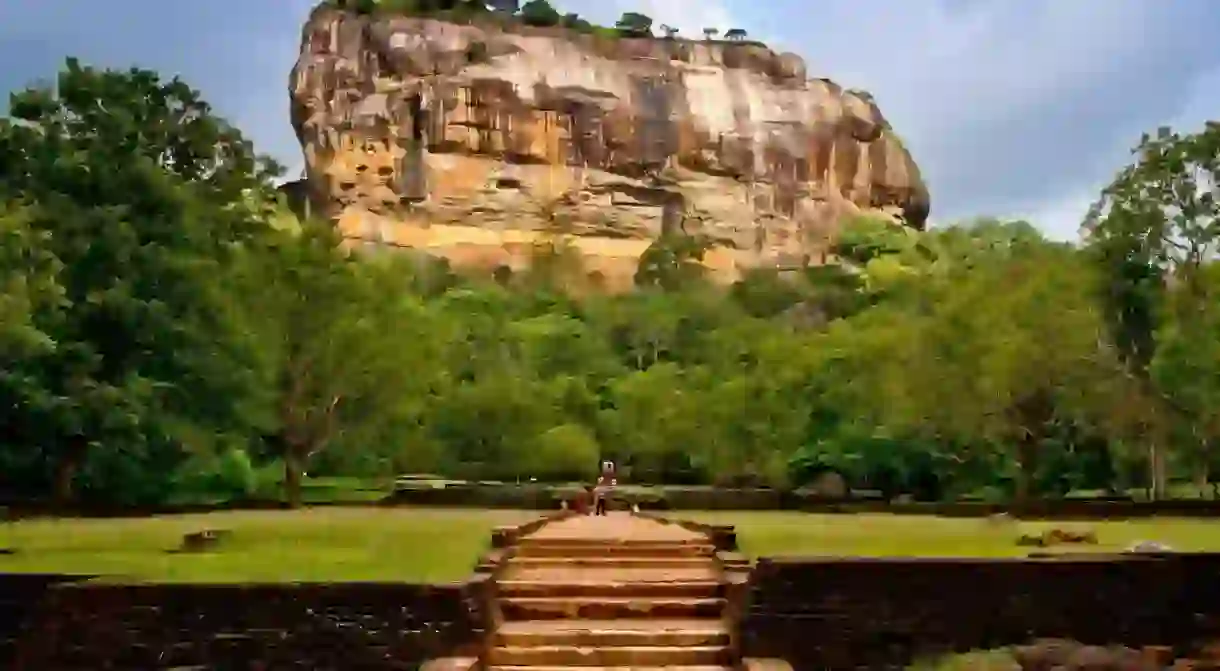Sigiriya: 8 Things to Know Before Visiting

Often referred to as the 8th wonder of the world, the ancient rock fortress of Sigiriya is a marvel that baffles even modern-day architects. The astounding height at which the castle was built, the many nooks and crannies holding centuries-old cherished secrets, and the still functioning water fountains in the fortress’s extensive gardens all offer a world of wonder to all those who visit. A UNESCO World Heritage Site, Sigiriya is a place that a person must visit at least once in their lifetime.
A bit of history
King Kashyapa I, the king’s son by a non-royal concubine, built Sigiriya to be impenetrable. Kashyapa I seized the throne after entombing his father, King Dhatusena, within a wall while still alive; the true heir to the throne, Moggallana, fled to South India, as he feared for his life. It was out of fear of an attack that Kashyapa I moved the capital as well as his residence from Anuradhapura to Sigiriya and built his fortress and pleasure palace on top of a rock where no one could reach it.
After assembling an army in India, Moggallana returned to Sri Lanka and declared war against King Kashyapa I. However, during the battle, King Kashyapa I’s soldiers deserted him, and he, in turn, committed suicide by falling on his sword.

Before King Kashyapa I
Archaeologists believe that the site was first inhabited during prehistoric times. The rock, formed from the magma of an extinct volcano, provides different shelters, including caves, which hold evidence that it sheltered Buddhist monks and ascetics from as early as the 3rd century BCE.
Beware of the wasps
Before you begin your ascent up the rock, please beware that on some parts of the rock face there are many wasps’ nests, and they are quick to attack. Visitors must be extra careful and wear clothing that covers the body in case of an attack; it is also important to be extremely quiet on the way up so as not to provoke the wasps.

You enter through the Lion Gate
The entrance to the palace is flanked by massive stone paws of a lion, which inspired Sigiriya’s name, which means “Lion Rock.” The entry to the castle used to be through the mouth of a lion; however, over time, the head collapsed, leaving only the paws.

The beautiful frescoes have inspired many people
Perhaps the best-known feature of Sigiriya are the colorful murals, located in the “Cobra Hood Cave,” depicting beautiful damsels holding flowers. At one point, an area measuring 140 meters long (459 feet) and 40 meters high (131 feet) featured over 500 of these maidens; however, only a few remain today. The subject of much adoration, many poets who have visited Sigiriya over the centuries have penned their thoughts, and most of these can still be seen today on the Mirror Wall.

“Graffiti” covers the Mirror Wall
Researchers believe the Mirror Wall was originally highly polished so that the king could see himself as he walked by the wall. Today, however, it features the “graffiti” of visitors who have visited Sigiriya, some of which date back to the 8th century. These inscriptions, including poems, as translated by Dr. Senerat Paranavitana, describe the feelings of awe that visitors felt when witnessing the beauty and the grandeur of the castle.

The gardens are some of the oldest in the world
Sigiriya features a series of gardens – of the water, boulder, as terraced varieties – that remains one of the best examples of ancient urban planning. The water gardens consist of ponds, pools, and fountains that are still functional, especially during the rainy season. The boulder gardens comprise large boulders and winding paths, while the terraced gardens consist of a series of terraces, which rise from the pathways of the boulder garden up to the staircases on the rock.

The summit is home to ruins, gardens, and incredible views
The ancient citadel once sat at the top of the rock, and remnants of a glorious past are still visible today. The buildings’ foundations, spread over 1.5 hectares, remain intact, as do the terraces and gardens. The summit also features a large pool, made by cutting into the rock, as well as smaller pools made of brick. The view is breathtaking and is fully worth the climb.














